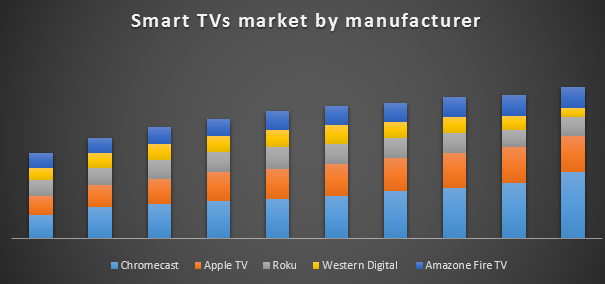Smart TV is basically a concurrence among computer and social TV which permits users to use all features presents in computers or smartphones. Smart TV provides many features like internet availability, storage capacity, global positioning system and other entertainment features such as games, music, and others. Smart TV is incorporated with internet connection which offers access to a number of popular websites with Netflix, YouTube, Amazon Prime, and Hulu. In addition to this, smart TV is currently facing many technological transformations such as motion control.
The television industry is composed of a change, but are the players ready to accept them? This question is raised because we never know when the costumer’s preferences change. Obviously, the cost of smart TVs is higher than normal TVs because they offer several benefits over normal TV. The consumer electronics industry is categorized by a multitude of choices. We never know when the costumer’s preferences change.

Every day, the usual consumer is surrounded by products providing to the widest audience possible or the most place of preferences. In a market where brands are pushing for space, the television industry must constantly re-invent itself to stay applicable to the consumer. In India, the present market size for televisions is around 50 million households and around 40% of the whole market share can be attributed to the diffusion of Smart TVs. Increasing internet penetration across the globe is estimated to be one of the major factors driving the growth of the market.
Some years ago the total market share of Smart TVs was below 8%. The present growth for Smart TVs has reached 40%. This jump is analytic of the changing consumer preferences, marking a stark contrast between the Indian consumer some years ago and the digitally savvy Indian consumer today. The main factors responsible for the growth of smart TVs market are rising demand for 4K & HDR resolution TVs, rising disposable income of consumers, growing population and changing lifestyles of the middle-class population are some major factors which are expected to raise the growth of global smart TV market during the forecast period.
Growth in the rural sector will also influence TV viewing culture. As per the government report in the rural sector observed the growth in household users who use the free dish TV. Free Dish TV can facilitate the growth in the rural sector to as many as 46 million households compared to the 36 million right now. With increasing digitalization, the number of DTH users in India is also expected to increase the growth of the smart TVs market. The growing use of 4K technology the smart TVs market is expected to fuel the growth of this market during the forecast period. Better connectivity and high-speed internet in the urban areas owing to 4K technology the boost the smart TVs market growth.

The availability of the affordable category television set is present in the market also support to drives the smart TVs market progress. These affordable brands that are developing in the market today, are providing you with the same technology at a better price. So, in future television market share of any affordable category brand will increase. Also features offered by smart TVs like internet accessibility, gaming, camera and more are attracting consumers globally. Additionally, the rising adoption of advanced and smart technologies all over the world is projected to fuel the growth of the global smart TV market.
Android which is a big player in the smartphone industry now getting a good revelation to the smart TV market. Screen sizes that could be explored in smart TV. The 46 to 55 inches display category is expected to hold the largest market share over the forecast period. This growth may be attributed to rising consumer preference to large-screen displays and features like high picture quality and high resolution with Dolby digital sound.
In the future smart TVs, market growth will fuel by the technological developments, Adoption of smart TV by advertisement media is a key trend which is expected to lead smart TV generation to the next level in near future. The final idea we will leave you with is how are you going to help drive the smart TVs market forward and in the right direction? If we think about these things now, it will soon be too late to make the changes we need to. Gratefully, we are on the right course.